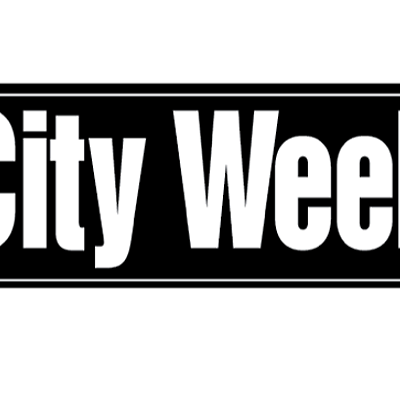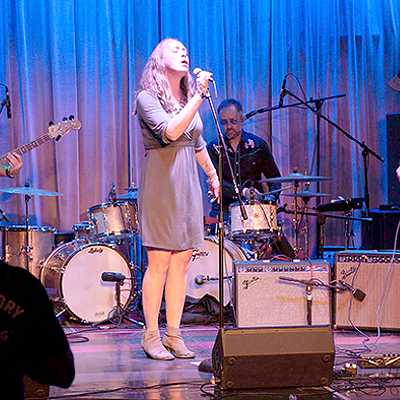"C'est froid!" exclaimed Ariry Andriamoratsiresy, the choreographer and artistic director of the 7-year-old troupe Compagnie Rary. "It's cold."
Hailing from balmy Madagascar, an island nation in the Indian Ocean, he and his fellow dancers were unprepared even for the relatively mild chill of the desert winter. In Tucson for two weeks, they make their American debut this weekend at Centennial Hall in the show Movement (R)evolution: New African Dance. Friday and Saturday, they'll perform contemporary dance along with two other African companies, hailing from Burkina Faso and South Africa. All three companies are top prize-winners in an African dance competition.
"The show's producers want to show African dance in a new light," tour manager Gacirah Diagne said. "This is contemporary work, by the young generation."
The trio of troupes, who have already toured Africa and Europe, will next play New York's Brooklyn Academy of Music in New York (where they'll meet African-American choreographers Bill T. Jones and Ron Brown). Then it's on to the University of Florida, Gainesville. Andriamoratsiresy and the other shivering dancers had not yet heard about the bone-chilling weather breaking 100-year records up and down the East Coast.
"Oh, no," he said, smiling, when he got the news.
But those climatic discomforts won't deter the dancers from their cultural mission. All three troupes practice the new forms that have revolutionized dance in Africa in the last 20 years. They're here to disabuse American audiences of the notion that African dance is invariably traditional and tribal.
"We don't do traditional dance," Andriamoratsiresy declared in flawless French, a legacy of French colonial rule in Madagascar. "It's contemporary. We live in contemporary times. Our gestures take our times and translate them, convey a message. It's about the social and human relations between the people on the stage."
Nevertheless, they do acknowledge a connection to African vernacular dance.
"Traditional Malagasy dance is imitative of animals," he explained. "It has a cat-like energy; it's feline. We try to borrow that energy. There are links."
The troupe's music likewise relies on traditional instruments, but its lone musician and composer, Linda Angelica Volahasiniaina, said she "creates new music on the old instruments." She uses the valihe, a harp-like instrument with 24 strings, played with the fingers; an aponga, for percussion; and the kaiamba, made of dried grass.
"I have a new way to use the kaiamba," she noted. "I rub it with my hands."
Contemporary dance started making inroads in Africa two decades ago, Diagne said. A Senegalese who studied dance in New York, and a former member of Urban Bush Women, Diagne now manages a contemporary dance festival in her hometown of Dakar. Such festivals have helped spread the new modern-dance gospel, she said, as have contemporary choreographers who travel the continent to teach and perform.
"Since the 1980s, there's been a current of new African dance," Diagne said. "The Mudra School opened in Dakar, run by Germaine Acogny. She gets the title of the mother of new African dance." The highly influential school also had a relationship with the renowned French choreographer Maurice Béjart.
Similarly, the Madagascar government brought in a team of Cubans in the early '80s to instruct the young Malagasy.
"They taught modern dance and stayed two years," Andriamoratsiresy said. "Later a certain Raúl Olivera, a Cuban, came and taught for a year."
Andriamoratsiresy, 35, studied with the visiting Cubans as a teenager. He went to the university intending to become a gym teacher, but ended up taking dance. Like most of the dancers in his troupe, he also became adept at martial arts, and he's participated in workshops by various visiting African contemporary choreographers. He's interested in "elements of global pop culture, Tai Chi and (Asian) Indian dance traditions." All of these, he said, come together in his work.
The piece he'll show at Centennial Hall, Mpirahalahy Miania (Several Make One) takes its title form a Malagasy fable about two brothers who help each other when they go hunting. (An American analog would be: Two heads are better than one.) Divided into four parts, it's staged around a wooden structure that represents by turn a door, a bed, a double-decker bus and, finally, a boat. Dancing to the live music played by Volahasiniaina, who sits on stage with her instruments, the five dancers do movements that change dramatically in each section.
"At first it's static, slow, then undulating, then ethnic and at the end, rhythmic and fast," Andriamoratsiresy said. The 2000 piece, lasting about half an hour, won the troupe second place at the 2001 festival in Madagascar, Sanga II: African and Indian Ocean Choreographic Competition.
The company that won third place, Compagnie Kongo Ba Téria, of Burkina Faso, in West Africa, also reprises its winning piece. Vin Nem (The Light), danced to live music, is "a dialogue of bodies," of dancers whose bodies "arch, move in duos and trios and suspend time," according to a written statement by its choreographer, Lacina Coulibaly.
The first-prize winner comes last in the 95-minute concert. The eponymous troupe Sello Pesa, of South Africa, performs Same but Different. The piece "describes 24 hours in a city-dweller's life, the work-eat-sleep routine, and how we are affected by the people we meet around us," writes Pesa, the work's choreographer and one of its dancers.
Andriamoratsiresy also emphasizes his urban origins. He and his dancers live in Antananarivo, capital of Madagascar. Their art naturally reflects the lives they lead.
"We live in a city," he declared, "but it's an African city. We don't live a traditional life. I have never lived in the country. I create dance about our lives."














